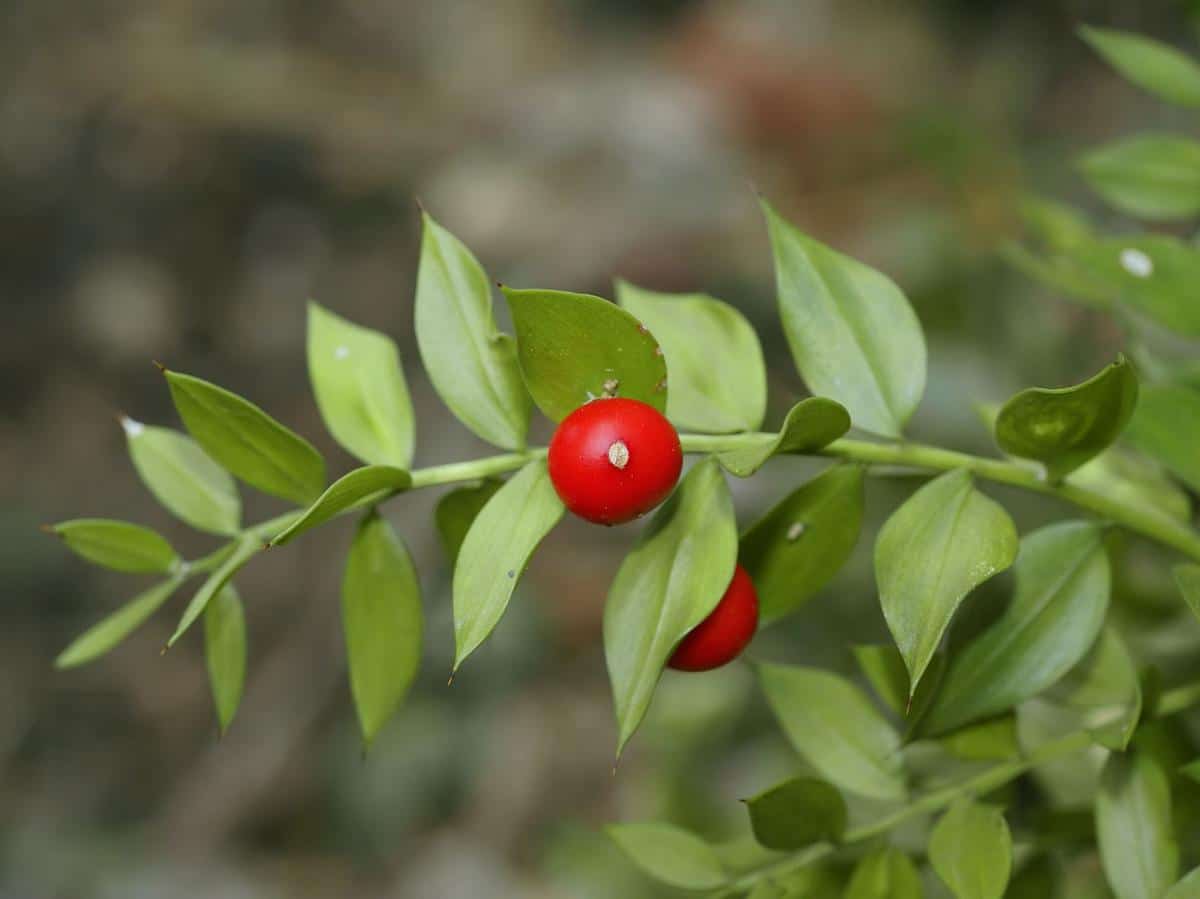
Image - Wikimedia / Hans Hillewaert
In the world there are thousands of species of shrubs, which is fortunate, because they are of that type of plants that can be used to plant in the spaces of the garden that are becoming empty, work as bonsai, or grow in pots or planters. . Although each and every one of them has its own needs, if you are looking for one that is beautiful and easy to care for, we recommend those of the genus Russian.
There are six different varieties, and most are able to withstand cold as well as frost. In addition, they tolerate pruning well, although that is: it is important that it is not drastic, otherwise they would become very weak.
Origin and characteristics of Ruscus
It is a genus of evergreen and rhizomatous shrubs comprising six species native to western and southern Europe, Macaronesia, northwestern Africa, and eastern Caucasus. They reach a maximum height of 1,2 meters, and develop stems that branch from the base. From them arise phyllodes - false leaves - that measure from 2 to 18 centimeters long by 1 to 8 centimeters wide and are responsible for photosynthesis. The true leaves are very small.
The flowers are white with a dark purple center, and small in size. When pollinated, produce red berries 5 to 10 millimeters in diameter.
Ruscus species
The varieties of Ruscus are the following:
ruscus aculeatus
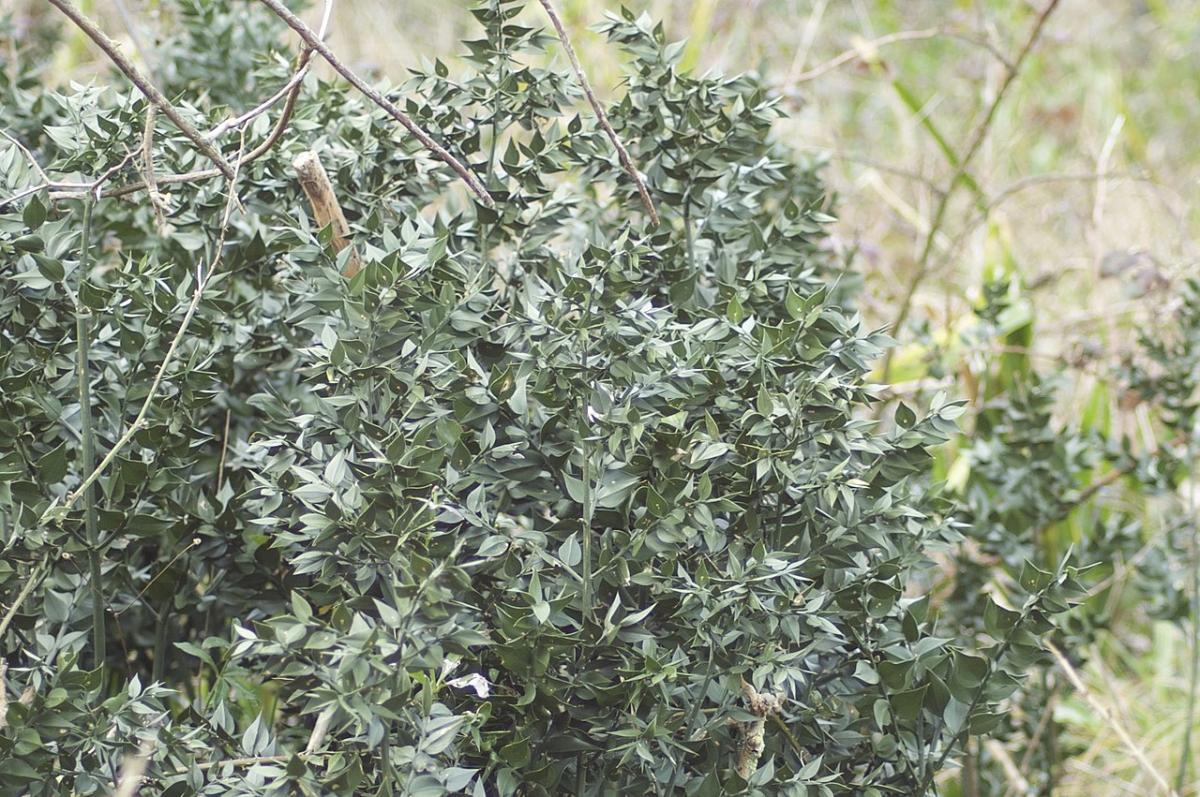
Image - Wikimedia / Colsu
El ruscus aculeatus It is an evergreen shrub native to Eurasia, specifically Central Europe and the Mediterranean region, reaching as far as North Africa. Grows to a height of 30 to 80 centimeters, and in autumn it produces female or male flowers of greenish or purplish color. The fruit is a red berry that measures 10-12 millimeters in diameter and contains two seeds. Resists up to -15ºC.
Ruscus colchicus
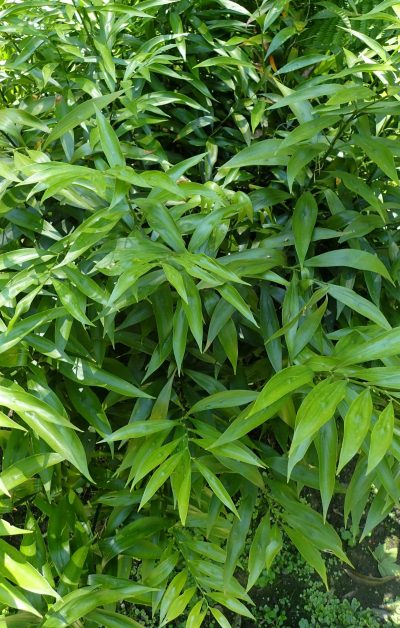
Image - Wikimedia / Krzysztof Ziarnek, Kenraiz
It is known as the Colchis butcher's broom, and it is an evergreen shrub native to the Caucasus. Reaches a height of 50 centimeters, and its false leaves have an elliptical shape, as well as a size of 12 centimeters long by 5 centimeters wide. Its fruits are red berries 1 centimeter in diameter. Resists up to -12ºC.
Ruscus hypoglossum
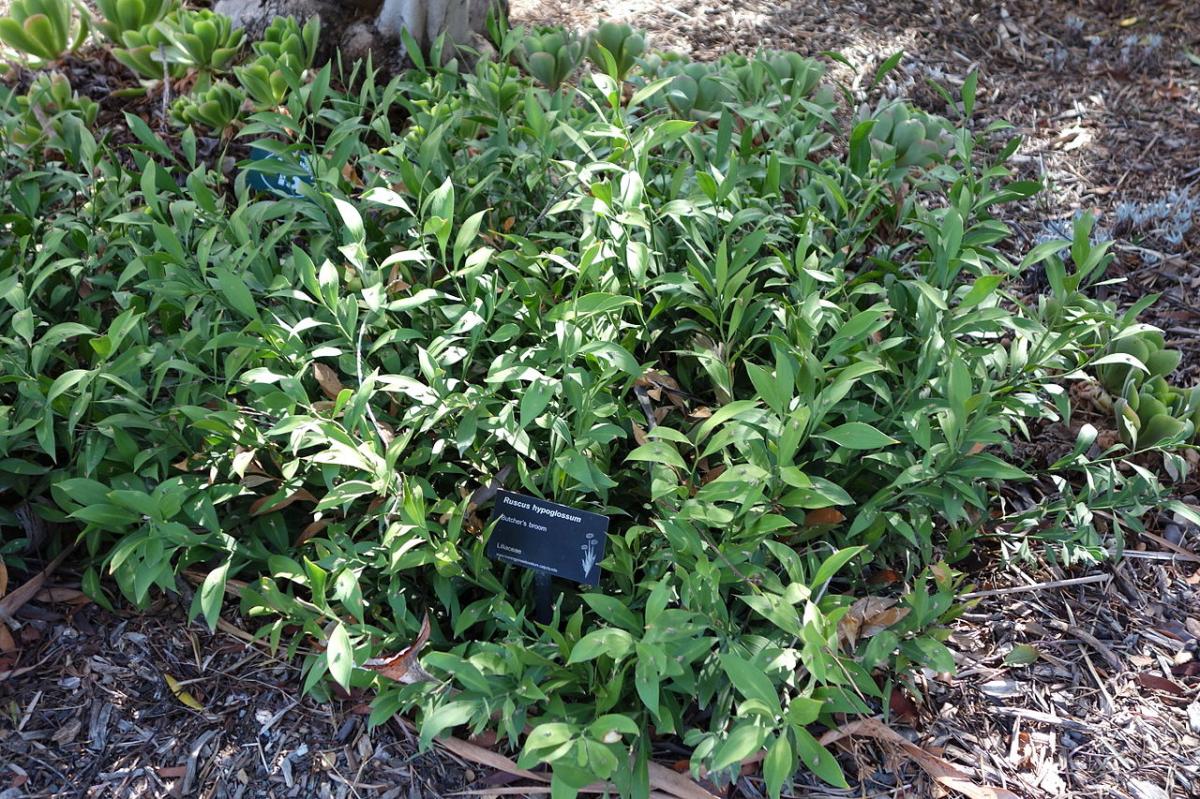
Image - Wikimedia / Krzysztof Ziarnek, Kenraiz
This is an evergreen variety of Ruscus that grows in central and southeast Europe. Reaches a height of between 50 centimeters and 1 meter, and although its true leaves are insignificant, it produces cladodes similar to leaves with a lanceolate or oblong-lanceolate shape, of dark green color. The flowers are female or male, and its fruits are red berries 1 centimeter in diameter. Resists up to -12ºC.
Ruscus hypophyllum
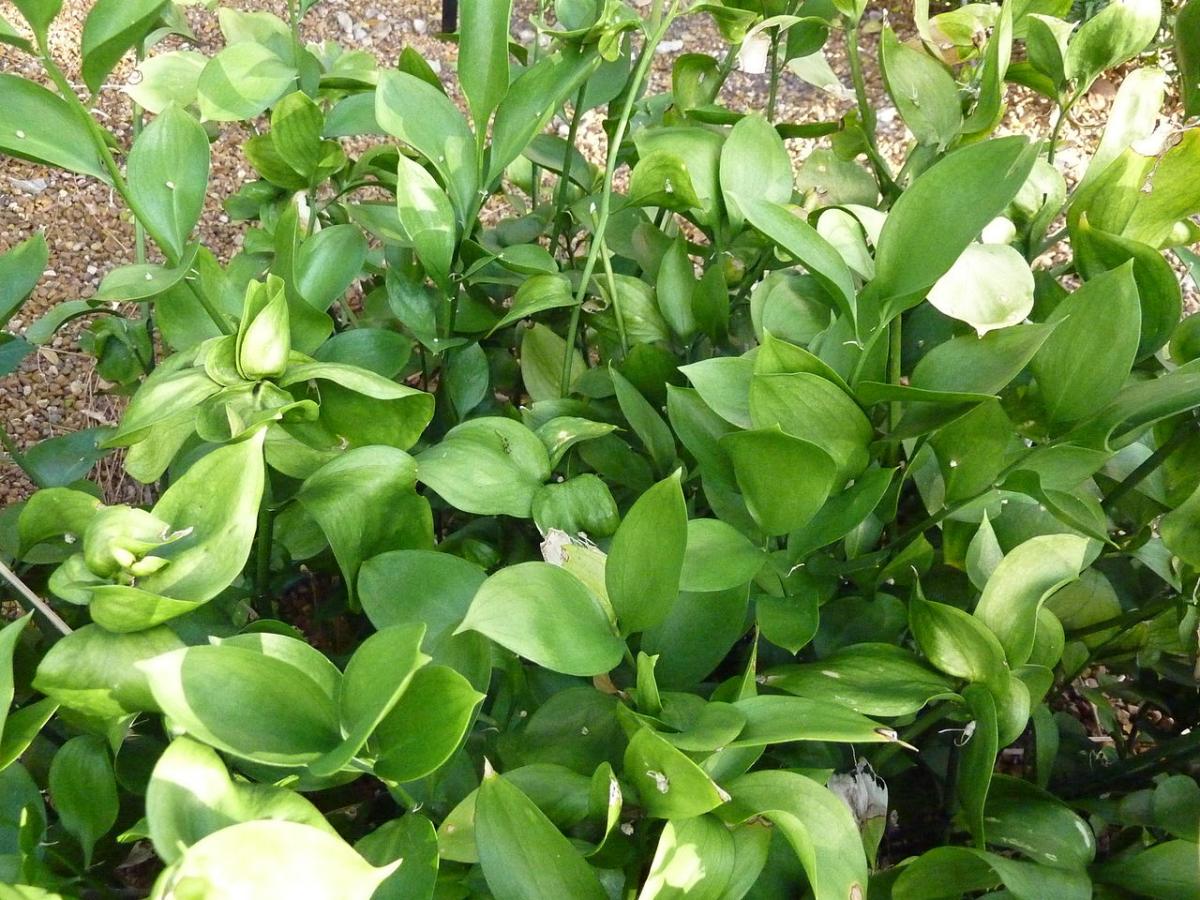
Image - Wikimedia / James Steakley
Known as laureola, this is an evergreen shrub native to the Iberian Peninsula and North Africa. It can measure up to 1 meter in height, and develops false green leaves called cladodes. Its flowers are unisexual: the male ones are greenish-white and have six stamens, while the female ones do not have stamens but do have a pistil. These sprout from early winter to spring. The fruit is a red berry. Resists up to -7ºC.
Ruscus x microglossum
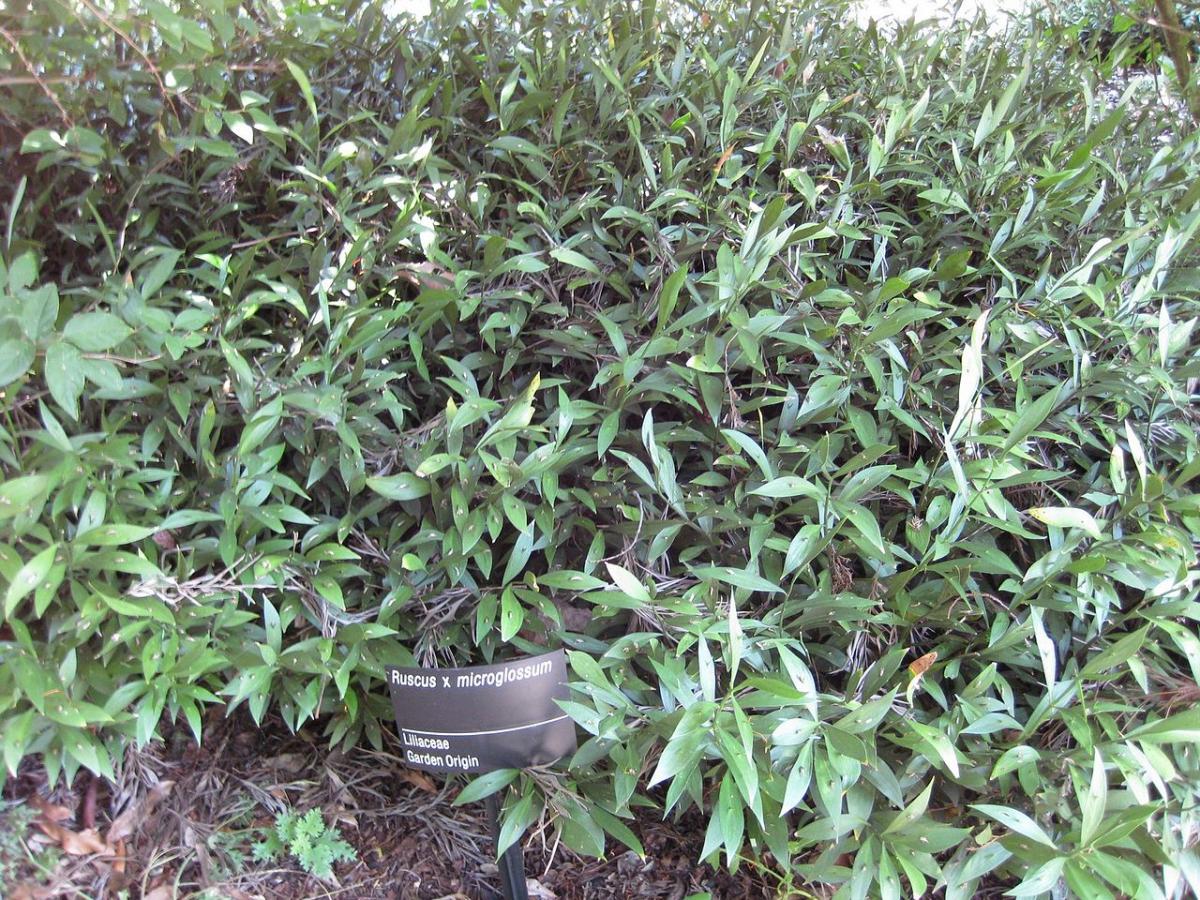
Image - Wikimedia / Raffi Kojian
This is a hybrid fruit of the cross between Ruscus hypoglossum y Ruscus hypophyllum. It is a small plant, which rarely exceeds 40 centimeters. Its cladodes are lanceolate or oblong-lanceolate, green in color. In France and Croatia it is considered an invasive plant according to the Global Biodiversity Information Faculty (GBIF). Resists up to -12ºC.
Ruscus streptophyllus
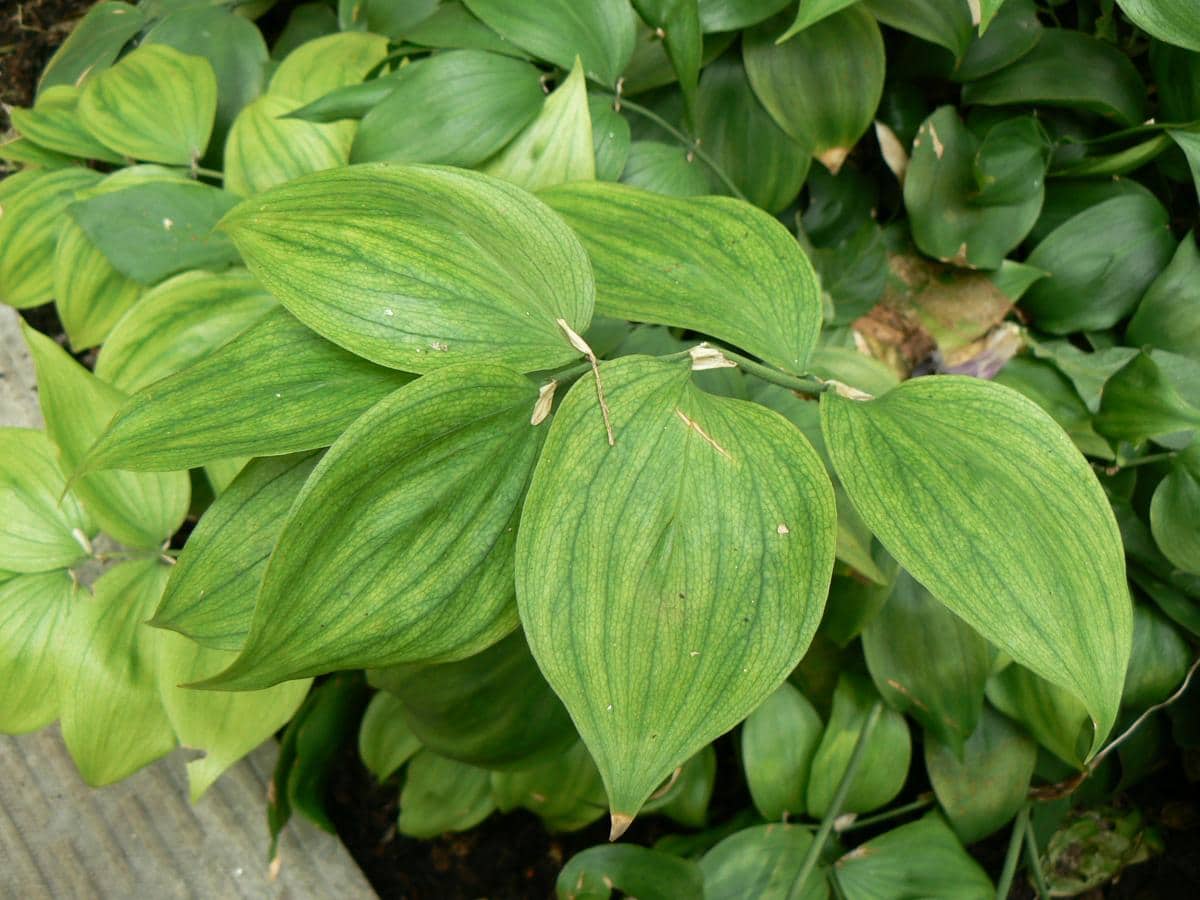
Image – Earth
El Ruscus streptophyllus is an evergreen shrub native to Madeira, which reaches a height of up to 40 centimeters. Its cladodes are dark green, and it produces purple flowers. The fruits are red berries that finish ripening in late summer or early winter. Resists up to 5ºC.
What are the care that must be given to them?
If you want to grow Ruscus in your garden or patio, we recommend you provide these cares that we will explain below:
- Location: they are plants that have to be kept in a place where the sun hits them directly, or they are in semi-shade. In the event that you cultivate Ruscus streptophyllusIt is important that you bear in mind that by not resisting frost, you must protect it if temperatures below zero are registered in your area, either inside your home, or in a greenhouse.
- Earth:
- Pot: must be filled with mulch or universal substrate.
- Garden: the garden soil must be fertile, and it must also have very good drainage.
- Irrigation: Ruscus do not withstand drought, so they have to be watered from time to time. In general, they will be watered 2 or 3 times a week in summer, and 1 or 2 a week during the rest of the seasons.
- Subscriber: in spring and summer they must be paid with fertilizers such as compost or worm castings.
- Transplant: towards the middle of spring, when the minimum temperature is 15ºC or higher. If they are in a pot, they must be changed approximately every 3 years, when you see that the roots come out of the holes, or they have already occupied the entire container.
- Pruning: late winter.
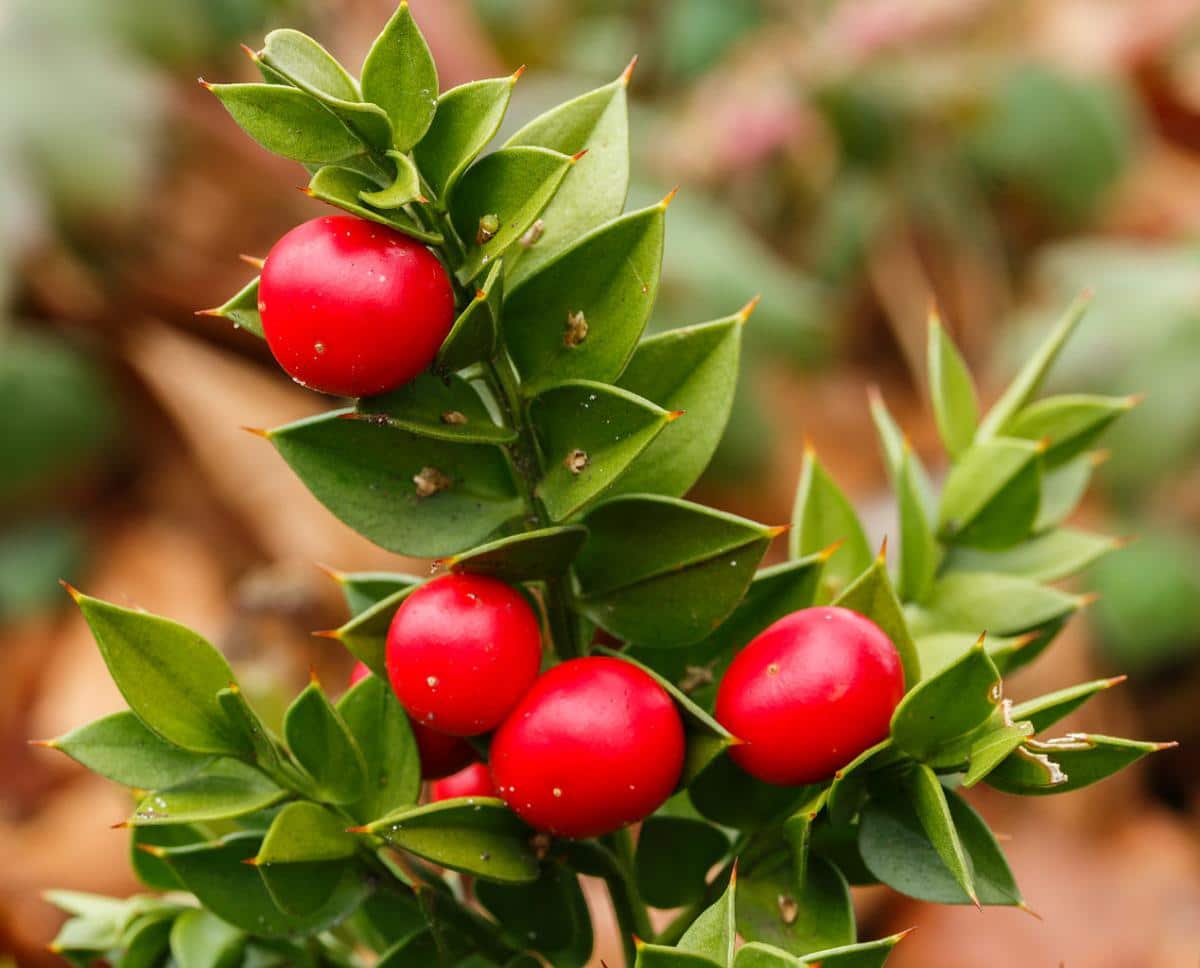
Image - Wikimedia / Dominicus Johannes Bergsma
What did you think of the Ruscus?